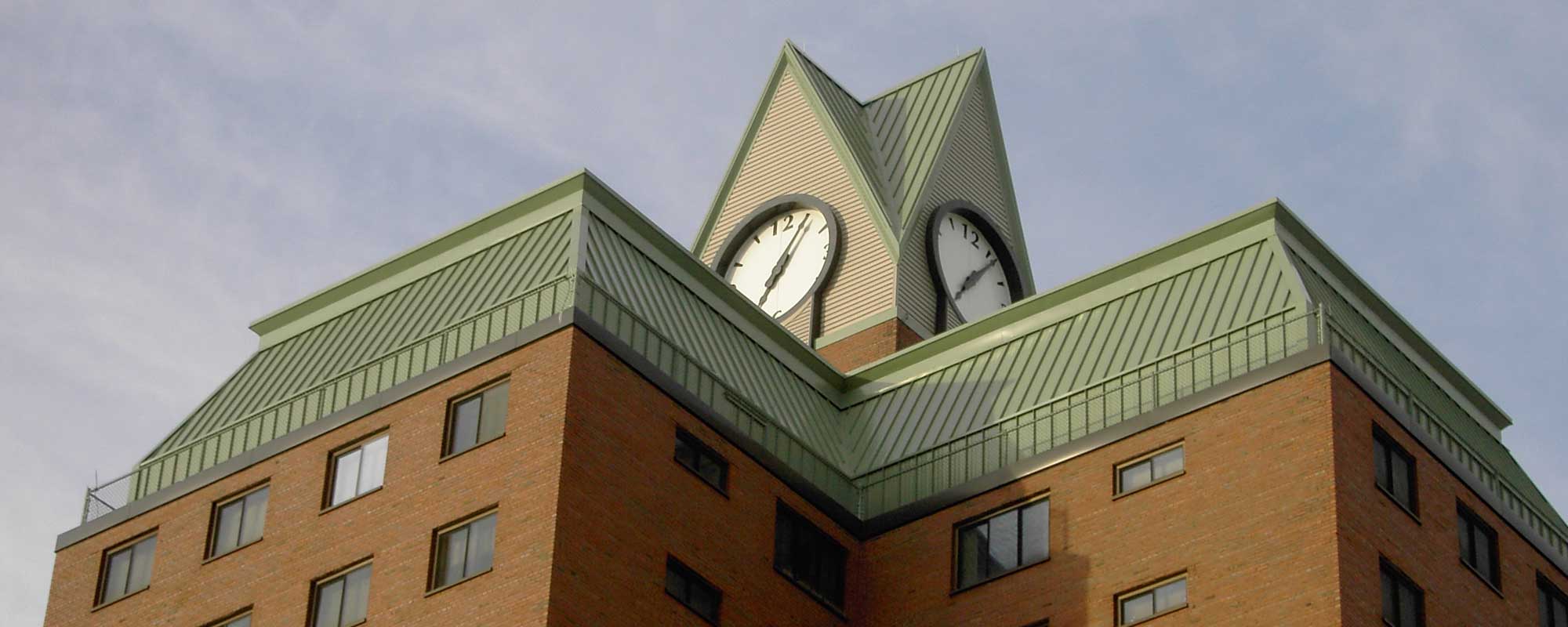Welded Coping Corners
Ultra Seam offers a variety of ES-1 tested edgings, gravel stops, and copings that are part of a flat roof membrane installation system. They are what finishes off the membrane at the perimeter of the building. In addition to the ES-1 tested systems, we manufacture many custom perimeter sheet metal applications.
It is not unusual to encounter specifications on a project that call for welded coping corners. Are there valid performance reasons for this requirement and are there drawbacks? Ultra Seam’s position is that the customer derives no benefits from this requirement and is negatively impacted in a number of ways. Why do we take this position? Below is an overview of this subject.
Reasons for why this language is in some specifications:
1. Many architectural firms draw upon generic specifications that are written by companies that are in the business of creating specifications for all the various trades that are part of constructing a building. Many architects do not have the manpower and specific trade expertise to develop good specifications in-house. Unfortunately, these specification companies often lack a high level of expertise themselves and put out specifications that have a number of questionable / defective aspects to them. Any architect that utilizes these generic specifications as the basis for a project may inadvertently incorporate the defective requirement into the project.
2. Specifiers often turn to manufacturers of various products to help them create a specification, as they themselves do not have expertise in specific trades. ( The National Roofing Contractors Association did a survey of university architectural schools and found that, on average, a student spends 1 day on roofing during his college career.) Asking manufacturers for help with specifications can be a good thing. Ultra Seam frequently is asked to do this. The problem is that some manufacturers will try to inject requirements into the specifications that will help eliminate competition. In the case of coping corners, requiring a welded corner will eliminate almost all roofing companies from fabricating their own metal, as they do not weld in-house. A number of manufacturers also do not offer this as they don’t believe it offers benefits. By getting this into the specifications, most of their competition is eliminated. Without competition, these systems tend to get more expensive.
Reasons why welded corner should not be required:
1. There is no performance benefit to using welded corners. Coping sections are generally fabricated in 10’ lengths. At each joint between these sections there is a splice plates. There may be hundreds of these joints on a project. Is a corner joint different in its performance demands than the other joints? NO! In fact, if anything the typical overlapped and riveted joint is stronger and has less potential for any leakage than all of the other splice joints. ( You cannot lap and rivet all coping joints, as the accumulated expansion stress on long lengths of metal could result in ruptures at some locations. )
2. With modern roof system design, the coping takes the brunt of the weather and secures the membrane against wind uplift. It also is an attractive way to finish off the roof system. It is not, however, needed to provide the only leak barrier for the building. In almost all applications the roof membrane ( or some type of membrane ) runs up the parapet, across the top, and turns down the face of the of the building. In other words, the roof system is watertight without the coping. If splice plates work well enough around the vast majority of the building perimeter, what makes the corners different?
3. Building corners may not be a true 90 degree angle. Premanufactured corners that are made to a true 90 degree angle may not fit well. Custom angles on a project are an even bigger problem. 4. Roofing contractors try to minimize the number of short coping pieces on a project, as they can detract from the appearance of the finished installation. Pre welded corners will be a predetermined length on each side of the corner… frequently a couple of feet. When installing the long runs of 10’ coping, you will find that you end up with the last section not fitting perfectly to the end of the pre-welded corner. This means that you will need to fit in another short piece of coping in that gap. You could end up with a long run of 10’ pieces followed up with a 1’ piece and then a 2’ corner. This does not look good.
5. Pre-welded corners are painted after the welding process. Kynar post painting does not carry the same warranty as the standard coping that is production painted on a coil painting line, using a multi stage pretreatment process. Decades from now, will the corners look and perform as well as the rest of the coping?
6. A specification that eliminates qualified competition usually results in higher costs to the owner. The welded miter process is expensive in itself, and delays delivery. But if only a few national manufacturers that offer the welding option can bid the project, the owner will end up paying extra for it. Feel free to check out what those systems cost.
In summary, Ultra Seam can supply welded corners… but we choose not to promote that option as we feel that it is not in the best interest of the owner or the project. Our guiding principle is to always promote quality and performance, but to also give the customer the best value possible without sacrificing that performance. Welded corners do not fall within those guidelines.

